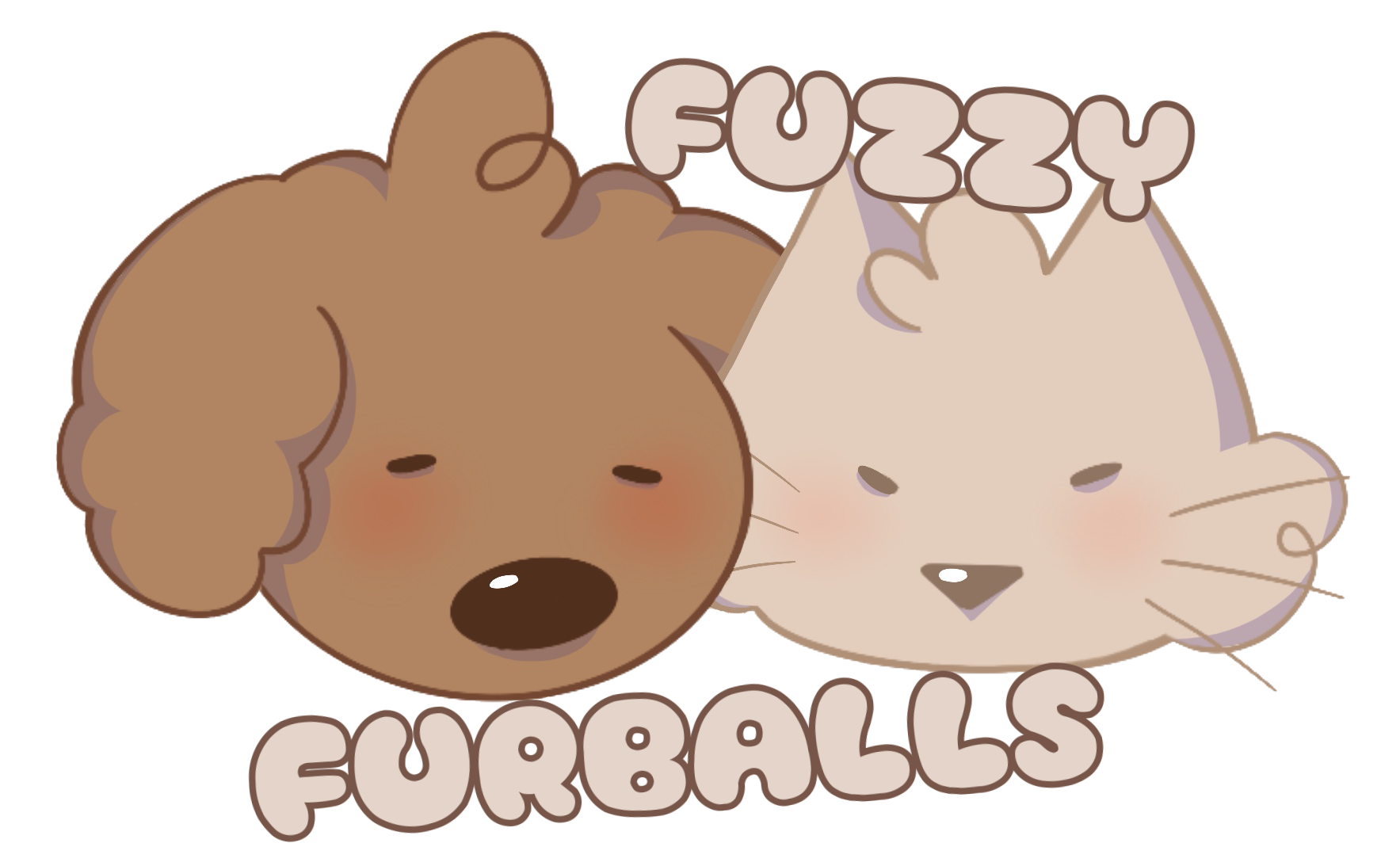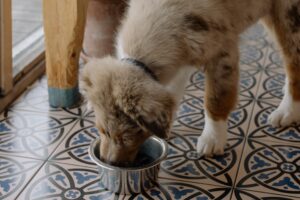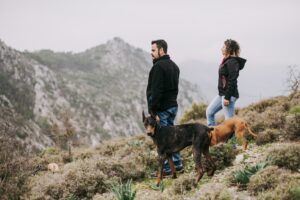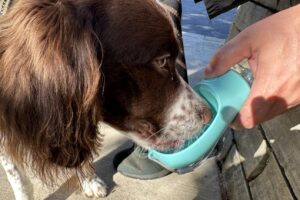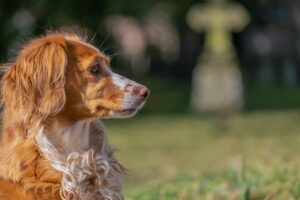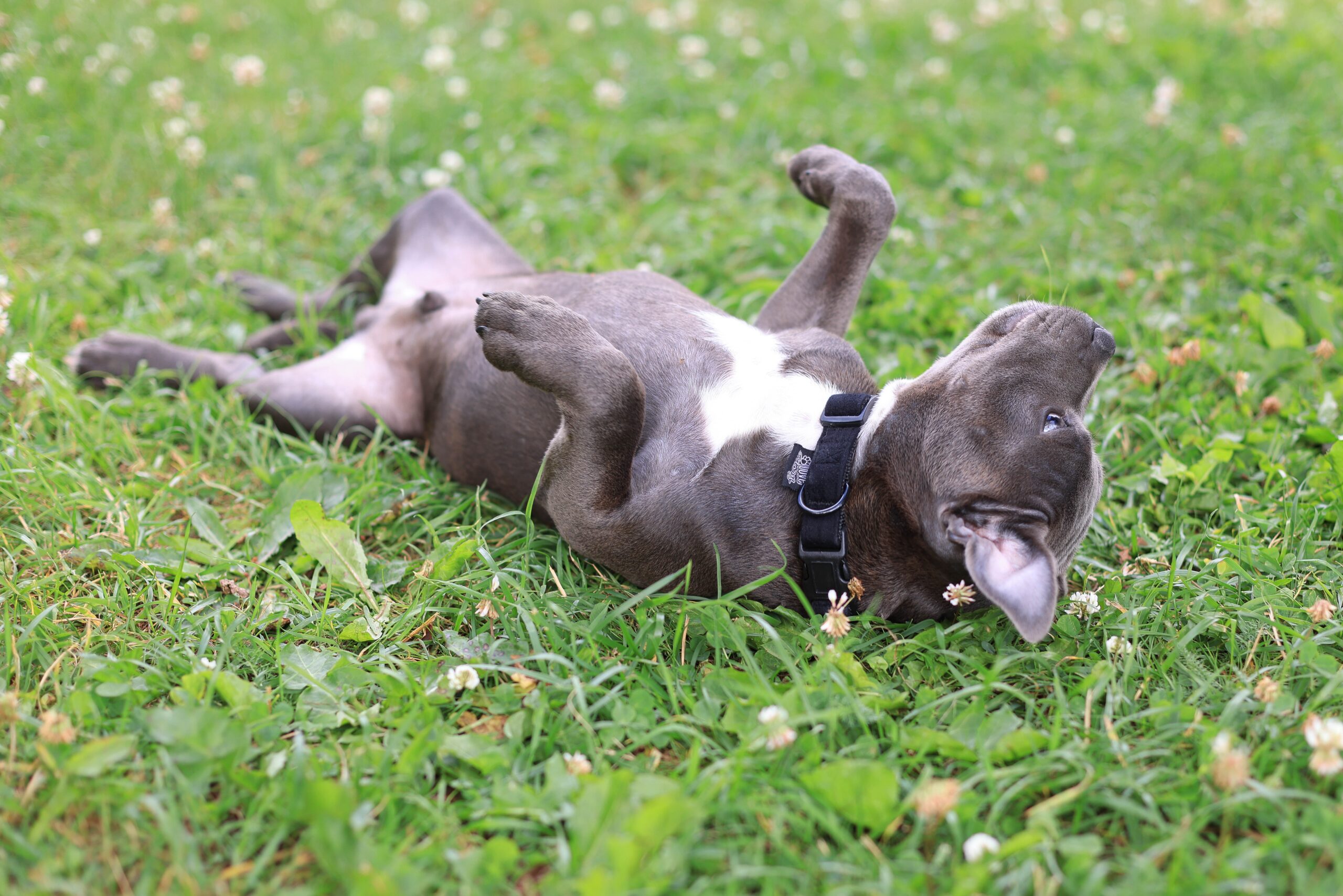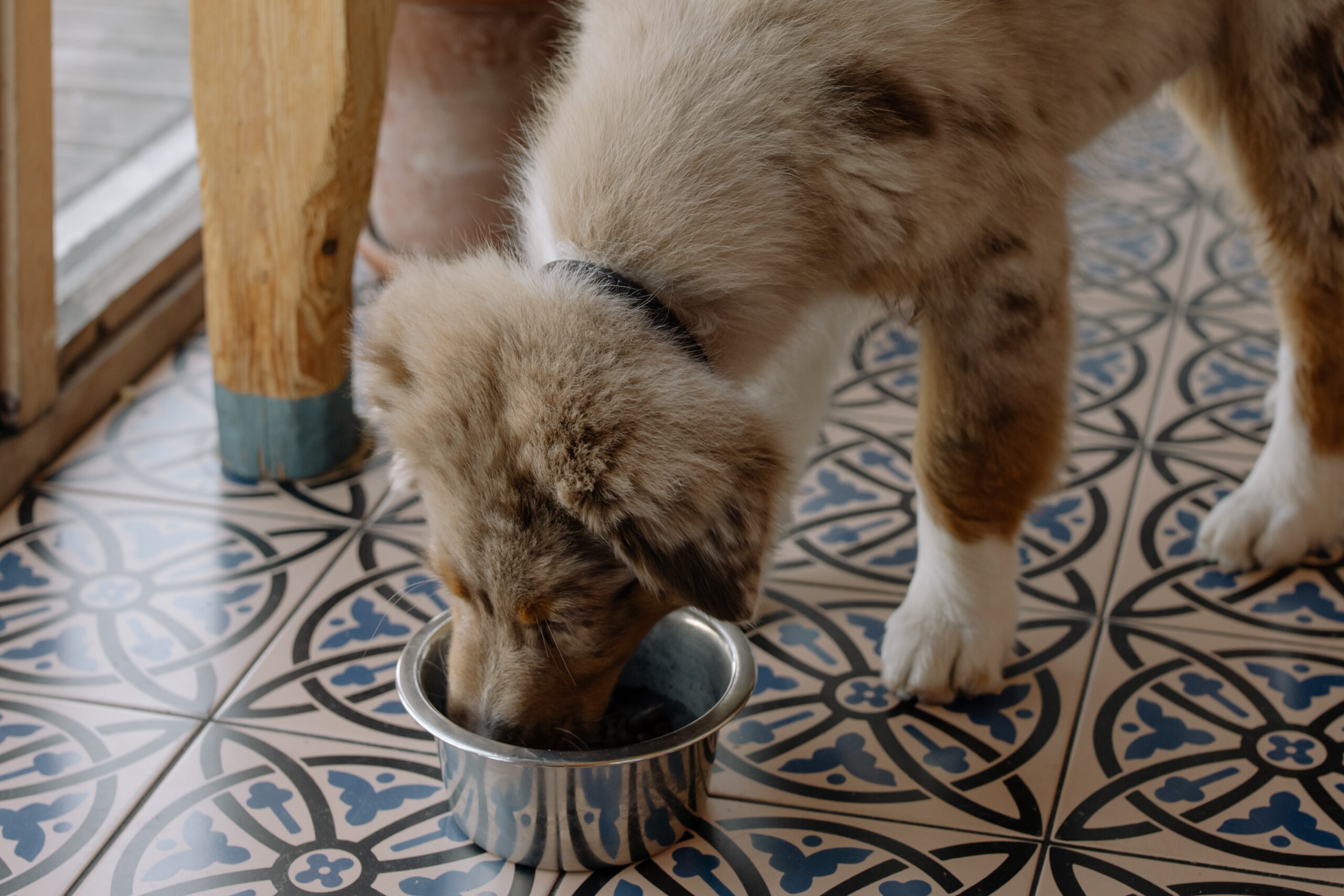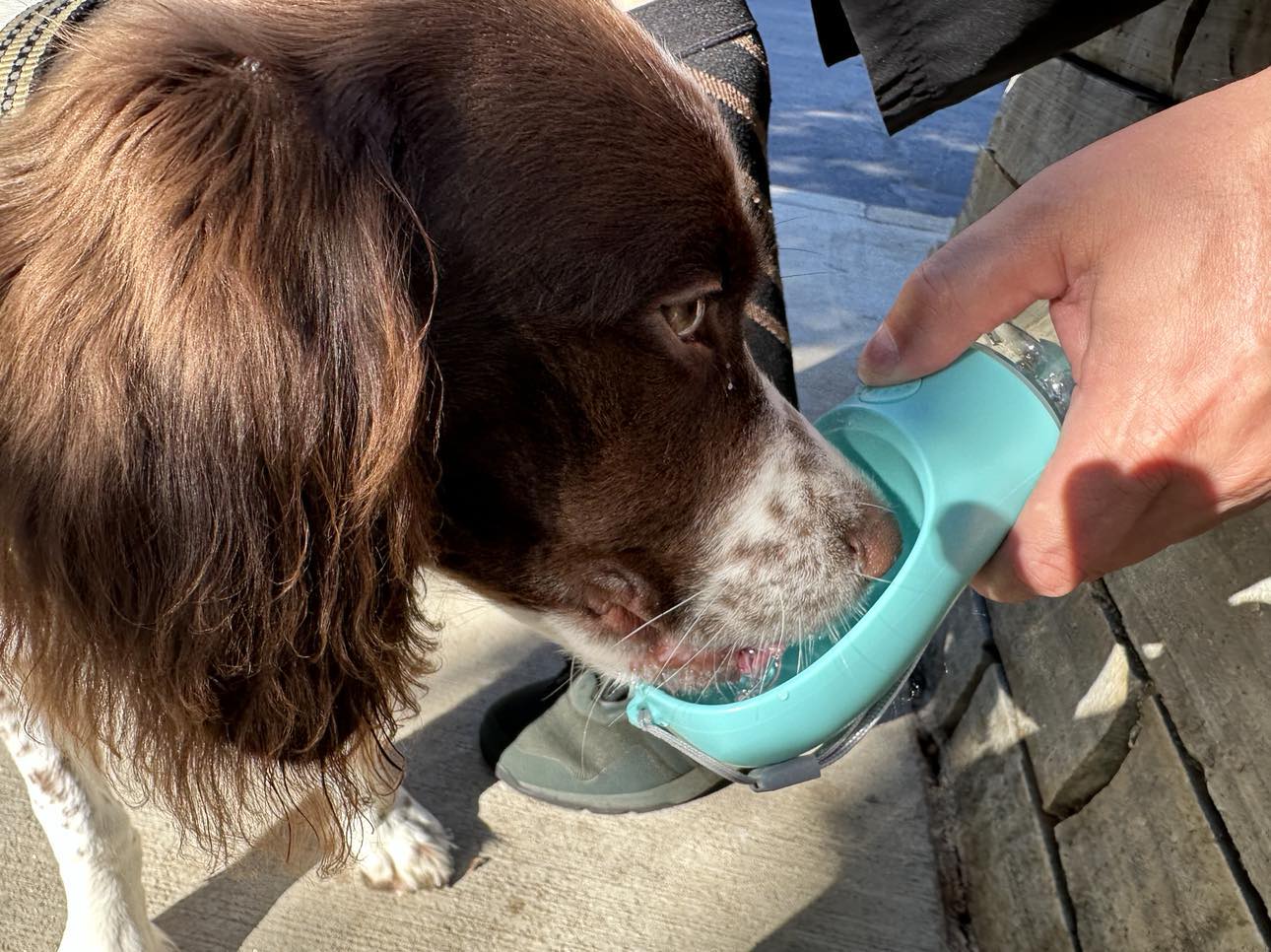If you’re a dog owner, you may have noticed your furry friend engaging in a rather curious post-meal ritual – rolling around on the ground or grass immediately after eating. This behavior, while amusing to watch, often leaves pet owners wondering about its underlying meaning. From small Chihuahuas to large Great Danes, dogs of all breeds seem to exhibit this behavior at one time or another. But why do they do it?
In this article, we delve into the intriguing phenomenon of dogs rolling around after a meal and attempt to unravel the various reasons that could be driving this behavior. From instinctual roots to possible medical implications, we aim to shed light on the possible motivations behind this seemingly quirky habit. By understanding the reasons behind this behavior, we can gain a deeper insight into our canine companions’ unique instincts and tendencies, ultimately strengthening the bond we share with them. So, let’s embark on this fascinating journey of discovery and find out why our dogs roll around after eating.
Natural Instincts
To comprehend why domesticated dogs exhibit this behavior, we must turn to their wild ancestors. In the wild, canines, including wolves, coyotes, and other wild dog species, often roll in the grass, dirt, or other natural surfaces after consuming their prey. This seemingly peculiar action is believed to serve multiple purposes ingrained in their evolutionary history.
In the wild, scent plays a vital role in communication and survival. Rolling in the remains of their meal helps wild dogs mask their own scent, making it more challenging for potential predators to detect them. By reducing their odor, they enhance their chances of evading larger predators or competitors, ensuring their safety in the unforgiving wilderness.
Though domesticated dogs have come a long way from their wild counterparts, they still retain many primal instincts. Centuries of domestication have not entirely erased these inherent behaviors. The act of rolling around after eating is one such behavior that appears to have carried over from their wild ancestors.
Domesticated dogs might not have the same survival needs as their wild relatives, but their instincts remain intact. Rolling in the grass post-meal is, in some ways, a vestige of their ancestry—a glimpse of their innate animal nature surfacing in their daily lives.
Interestingly, even dogs raised in urban environments with little exposure to wilderness can exhibit this behavior. It suggests that the instinct to roll around after eating runs deep within their DNA and is not solely tied to practical reasons in the modern world.
Scent Marking and Territory
In the animal kingdom, communication often transcends vocalizations and body language. Scent marking is a prevalent form of communication among various species, including canines. Through the release of specific chemical signals, animals can convey crucial information to others in their vicinity. Scent marking serves multiple purposes, such as defining territories, signaling reproductive readiness, establishing social hierarchies, and even aiding in navigation.
For canines, the olfactory sense is incredibly well-developed, and they use scent as a primary means of gathering information about their surroundings and fellow creatures. By leaving their unique scent marks, dogs can establish a “scent identity” in their environment, akin to a calling card, which conveys important information to other dogs.
When a dog rolls around in the grass or on the ground after eating, they might be engaging in scent marking behavior to establish their presence and claim their territory. The act of rolling allows the dog’s scent glands, located in various parts of their body, to come into contact with the ground. The scent from their paws, back, and other body parts is then transferred to the surface they roll on, effectively “marking” it with their unique odor.
For dogs, scent marking is not limited to urinating on objects or surfaces; it can extend to rubbing their body against the ground as well. This behavior is especially prevalent in intact (non-neutered) male dogs, who have higher levels of hormones that drive them to assert their presence and claim territory.
Rolling around after eating may also serve as a way for dogs to mingle their scent with the smells of the food they have consumed. By doing so, they could be signaling to other dogs in the area that they have successfully found food, possibly indicating a food source that others might be interested in exploring.
While territorial marking might not hold the same life-or-death significance for domesticated dogs as it does for their wild ancestors, this instinctual behavior remains present in their genetic makeup. It’s a fascinating reminder of their primal heritage and their unique ways of interacting with the world around them.
Behavioral Expression of Satisfaction
As pet owners, we often observe our dogs’ behavior to gauge their emotional well-being and overall happiness. Dogs, like humans, have their ways of expressing their emotions, and their actions can provide valuable insights into their mental state.
When a dog rolls around after eating, it’s essential to consider their behavior in conjunction with other signs of contentment. A satisfied and happy dog often exhibits relaxed body language, including a loose wagging tail, soft eyes, and an overall calm demeanor. Furthermore, content dogs tend to display playful behavior, engaging in activities like playful barking, tail-chasing, or fetching toys.
Rolling around after eating may indeed be a manifestation of a dog’s satisfaction or happiness. Just like humans express their joy through laughter or dancing, dogs might use this post-meal ritual as a way to celebrate their contentment. The act of rolling can be a spontaneous and exuberant expression, particularly if they’ve enjoyed a tasty meal or a delightful treat.
Moreover, this behavior may be an indication of a positive association with mealtime. If a dog has consistently experienced good meals and a comfortable environment, they may come to associate eating with pleasure and joy. Rolling around after eating could be their way of expressing their delight and overall enjoyment of the dining experience.
However, it’s crucial to remember that each dog is unique, and individual behavior can vary widely. Some dogs might not exhibit this behavior at all, while others might roll around after every meal. Additionally, the context and setting in which the behavior occurs can also play a role in its interpretation.
In cases where the rolling behavior is accompanied by other signs of contentment and relaxation, it is likely a joyful expression. However, if the behavior seems compulsive, anxious, or if the dog exhibits signs of discomfort or distress, it may be indicative of an underlying issue that requires attention.
To better understand our furry companions, we should observe their behavior holistically, considering their entire body language and overall demeanor. By paying close attention to their cues, we can better interpret their emotions and build a stronger bond with them.
Sensory Experience
For dogs, the world is a tapestry of scents and tactile sensations. Their sense of smell is incredibly powerful, with up to 300 million scent receptors in their noses, compared to about six million in humans. They use this remarkable olfactory ability to gather information about their environment, other animals, and even emotions. Smells carry stories for dogs, allowing them to discern the presence of other animals, potential food sources, or even familiar humans.
In addition to their keen sense of smell, dogs also experience the world through touch. Their bodies are equipped with specialized nerve endings that enable them to perceive textures, temperatures, and pressures. Physical contact with the ground or grass during their post-meal rolling session can provide them with a unique sensory experience that helps them connect with their surroundings in a profound way.
Rolling around after eating could be a way for dogs to further engage their senses and immerse themselves in the scents and textures around them. By rubbing their bodies against the ground, they might be maximizing their sensory experience, allowing the smells from the meal and the environment to intertwine.
Imagine a dog enjoying a delicious meal and then rolling in the grass, intertwining the scent of their food with the natural aromas of the outdoors. This sensory fusion might create a memorable and enriching experience for them, reinforcing their positive associations with mealtime and their environment.
Moreover, rolling on various surfaces might stimulate different nerve endings on their skin, adding an element of tactile diversity to their sensory encounter. Dogs are naturally curious creatures, and such sensory exploration could be an enjoyable way for them to interact with the world around them.
As we appreciate the sensory-rich world our dogs inhabit, it’s essential to recognize that this behavior is a natural expression of their innate curiosity and their way of experiencing life to the fullest.
Discomfort or Medical Issues
While rolling around after eating is often harmless and rooted in instinctual behavior, it’s essential to consider the possibility of underlying medical issues or discomfort. In some cases, dogs may engage in rolling behavior as a response to digestive discomfort or gastrointestinal issues.
If a dog experiences bloating, gas, or other digestive discomfort after a meal, they might roll in an attempt to alleviate the unease. The pressure and movement against their abdomen could provide temporary relief from the discomfort they are experiencing.
If a dog’s post-meal rolling is accompanied by other concerning signs, such as excessive drooling, vomiting, diarrhea, lethargy, or changes in appetite, it’s crucial to seek veterinary advice promptly. These symptoms could be indicative of underlying health issues that require attention and treatment.
A qualified veterinarian can conduct a thorough examination, perform relevant tests, and provide appropriate medical advice based on the dog’s specific condition. Early detection and intervention can significantly improve the outcome for any potential health concerns.
Attention-Seeking Behavior
Dogs are highly social animals and thrive on human interaction and attention. As such, they may engage in various behaviors to capture our focus and affection. Rolling around after eating could indeed be a form of attention-seeking behavior.
When a dog rolls around after a meal and observes their owner’s reaction, they may quickly learn that this action garners attention. Whether it’s laughter, verbal praise, or a simple pat on the head, the dog perceives these responses as positive reinforcement. Consequently, they may repeat the behavior in the future, hoping to receive the same response from their owner.
While attention-seeking behavior is one possible motivation for post-meal rolling, it’s essential to consider other factors that might influence this behavior. Here are some tips to help differentiate between attention-seeking and other motivations:
- Observe Consistency: If the rolling behavior is consistent and occurs after every meal, it may be more indicative of a natural, instinctual behavior rather than solely attention-seeking.
- Look for Additional Cues: Pay attention to your dog’s overall demeanor and body language. If they appear relaxed, content, and not overly fixated on your reaction, the behavior might be more instinct-driven. On the other hand, if they constantly seek eye contact or actively seek responses from you, it could be more attention-seeking.
- Consider Environmental Factors: Assess whether other stimuli, such as the presence of other dogs or changes in the environment, trigger the behavior. If it appears to be influenced by external factors, it might not be solely about seeking attention.
- Evaluate Context: Reflect on the specific timing and setting of the rolling behavior. If it typically occurs after mealtime and not in other situations, it could be more related to the satisfaction of eating rather than seeking attention.
- Rule Out Medical Issues: If your dog’s behavior has suddenly changed or is accompanied by other concerning signs, it’s essential to rule out any potential medical issues before attributing it solely to attention-seeking.
Understanding the motivations behind your dog’s behavior can help you respond appropriately. If the behavior is harmless and appears to be a natural expression of joy or contentment, providing positive reinforcement can encourage their happy demeanor. However, if you suspect attention-seeking behavior or find it excessive, it’s essential to address this with appropriate training and mental stimulation to ensure a well-balanced and happy relationship with your pet.
Playfulness and Joy
Playfulness is an inherent characteristic of dogs that brings joy to both them and their human companions. Just like human children, dogs never truly outgrow their love for playtime. Play serves essential functions for dogs, including physical exercise, mental stimulation, and social bonding.
Playfulness is an expression of a dog’s positive emotions, and it often indicates a healthy and happy state of mind. During play, dogs may engage in various behaviors, including running, chasing, jumping, and rolling around. These actions release endorphins, the “feel-good” hormones, contributing to their sense of happiness and well-being.
For some dogs, rolling around after eating may be an extension of their playful nature. Mealtime provides them with sustenance, and afterward, they may feel a surge of energy and joy, which they express through rolling or frolicking.
Rolling around could be an outlet for their exuberance and delight. The action of twisting and turning, combined with the physical contact with the ground, might be a form of self-amusement. They may find joy in the simplicity of the act, relishing the freedom of expression that comes with being carefree and playful.
Moreover, dogs often pick up on our emotions and energy. If you, as the owner, display happiness and enthusiasm during mealtime or after their playful antics, your dog may reciprocate by engaging in rolling behavior as a means of joining in the fun.
Ultimately, the rolling behavior might be their way of embracing life’s simple pleasures, just like a child rolling down a grassy hill in glee. Dogs have an incredible ability to live in the moment, and their playful actions, including rolling around after eating, remind us of the importance of finding joy in everyday experiences.
Preventing Unwanted Behavior
While rolling around after eating is generally harmless and often a natural expression of joy, curiosity, or sensory exploration, there might be instances where the behavior becomes problematic or undesirable. For example, if your dog’s rolling leads to messes indoors or causes disruptions during mealtime, you may want to consider managing the behavior. Here are some suggestions to help address any potential issues:
- Redirect the Behavior: If your dog starts rolling indoors or on furniture, gently redirect their attention to an appropriate area, such as a designated play area or a grassy patch outside. Encourage them to engage in play or other activities in the designated space to prevent unwanted rolling indoors.
- Create a Safe Environment: If rolling behavior poses a risk of injury, particularly if it happens near staircases or other hazardous areas, ensure your dog has a safe and secure environment to prevent accidents.
- Time Management: Consider scheduling playtime or exercise sessions before mealtime. Providing physical and mental stimulation before eating can help reduce the likelihood of excessive rolling behavior afterward.
- Training and Distraction: Implement basic obedience training to teach your dog commands like “sit” or “stay.” Use these commands during and after mealtime to redirect their focus away from rolling and onto more appropriate activities.
If you wish to modify the rolling behavior, positive reinforcement training can be an effective approach. Here’s how you can use this training technique to encourage alternative behaviors:
- Reward Desired Behavior: Whenever your dog exhibits behavior you find acceptable after eating, such as sitting calmly or engaging in a favorite toy, offer verbal praise, treats, or affection as positive reinforcement. This encourages them to associate positive experiences with the desired behavior.
- Ignore Unwanted Behavior: If your dog starts rolling around after eating, avoid providing attention or reinforcement for that specific behavior. Instead, wait for them to engage in an activity you find appropriate and reward that behavior.
- Distract and Redirect: If your dog begins rolling after a meal, distract them by calling them to you or offering a toy. Redirect their focus to something else that you’d prefer them to do, and reward them when they respond positively to the redirection.
- Consistency is Key: Be consistent in your training efforts and rewards. Dogs thrive on predictability and repetition, so ensure that you consistently reinforce the behaviors you want to encourage.
It’s essential to remember that all dogs are individuals, and their motivations and responses can vary. If you encounter challenges in modifying the behavior, consider consulting a professional dog trainer or behaviorist for personalized guidance.
By employing positive reinforcement techniques and managing the behavior when necessary, you can ensure a harmonious and enjoyable mealtime experience for both you and your beloved canine companion.
Conclusion
In this exploration of the intriguing behavior of dogs rolling around after eating, we’ve uncovered a tapestry of motivations that contribute to this fascinating habit. From ancestral instincts of scent marking and territory claiming to the expression of joy and playfulness, our canine companions engage in this behavior for multifaceted reasons. Their sensory experiences, combined with potential attention-seeking tendencies, create a rich tableau of their unique personalities and innate nature.
As responsible dog owners, it is crucial to observe our furry friends closely and attentively. While rolling around after eating is often a harmless and natural behavior, it’s essential to be aware of any changes in our pet’s actions, behavior, and overall well-being. If you notice any concerning signs, such as excessive discomfort, distress, or health issues, don’t hesitate to seek veterinary advice promptly. Your veterinarian can help diagnose any underlying medical issues and ensure that your dog receives the appropriate care and attention.
Our dogs’ behaviors are a beautiful testament to their complexity and depth of emotions. As pet owners, we are granted the privilege of witnessing their playful expressions of joy, their instinct-driven actions, and their unbreakable bond with us. Each dog is a unique individual, with their quirks, preferences, and enchanting idiosyncrasies. By seeking to understand and appreciate their unique behaviors, we forge a stronger connection with them, enhancing the beautiful bond we share.
As we celebrate the joys of having dogs in our lives, let us embrace the simplicity of their happiness, the richness of their sensory experiences, and the authenticity of their instincts. In every playful roll, we glimpse the wonder of nature and the extraordinary gift of sharing our lives with these loyal and loving companions.
So, as we continue on our journey with our canine friends, may we always cherish their playful frolics, their enchanting behaviors, and their unwavering devotion. Through understanding and love, we ensure that their lives are filled with happiness, just as they bring boundless joy into ours.
